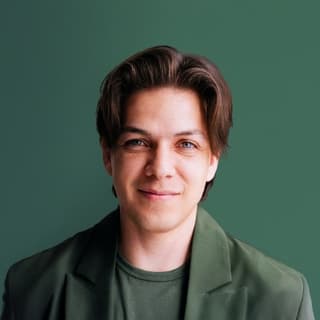
Much of the talk around AI video frames it as a race to create the ultimate all-in-one tool, but the reality is far more nuanced. Behind the scenes, creative teams are piecing together dozens of specialized tools, each built for a different task. What’s emerging isn’t a single powerhouse platform but a dynamic ecosystem where modern directors act as curators, blending technology and artistry to tell more compelling stories.
Cristian Rojas has spent 15 years shaping visual stories for global brands like Netflix and Canva. Now the AI Video Lead at Superside, he guides creatives that rely on generative AI every day in commercial production. His perspective reflects a new creative reality built on experimentation, specialization, and the art of combining many tools to achieve one vision.
Rojas rejects the idea that one platform will ever dominate AI video. "I don’t think a single tool will rule them all, and it comes down to data. Not just the amount of data, but the kind of data too. Every model is trained on a different slice of reality, which means each one develops its own strengths and weaknesses. Replicating the real world isn’t easy, and that’s why curation in how we train models and how we use them matters more than anything else," says Rojas.
- Curator's collection: Directors must then become expert curators of a constantly changing toolkit, patiently layering outputs from multiple specialized models. The resulting process is often a careful assembly of parts: a base clip from one tool, a voice-over from another, and lip-sync from a third. "I'm using 15 different tools for different things," Rojas explains. "On video, I'm constantly testing at least four, like Kling 2.5 or Hailuo 2.3 for their amazing physics, or Seedance Pro because it maintains the essence of the image better than any other. I can't tell my team to use only one tool, because every project has different use cases and you need to try different models."
The new reality encourages a different kind of director, one who embraces what Rojas calls "constraint-based directing." He makes the case for innovating around the technology's current imperfections.
-
Inside boundaries, outside the box: "A fine-tuned motion like someone opening a box and handling a product isn’t really possible yet," Rojas says. "So what can I do instead? That’s where creativity comes in. Maybe we first show the beginning of the action before cutting to the person's face as they react to what's inside, then come back to reveal the product. We’re finding new ways to tell a story convincingly by working within the boundaries of what the technology can do."
-
Method to the madness: Working in this fragmented, cross-tool environment places a new premium on a methodical, almost scientific, approach to the creative process. The shift is helping to elevate prompting from a simple command to a sophisticated art form, where success often hinges on the ability to deconstruct a vision into precise, iterative steps. "AI is wonderful until you need exact consistency and control. I've found that scriptwriters transition nicely to AI workflows because they have the right skill set: the ability to articulate what they're trying to do, break it down into steps, and think systematically to backtrack and iterate. That's not an easy thing to do," he explains.
 It's arguably even more work right now to achieve something great within the limitations of AI, but that just proves how responsible humans are for the output. A scene is lighting, blocking, and emotion from talent. Without specialists who have developed that eye, it's just not going to happen on its own.Cristian Rojas - AI Video Lead | Superside
It's arguably even more work right now to achieve something great within the limitations of AI, but that just proves how responsible humans are for the output. A scene is lighting, blocking, and emotion from talent. Without specialists who have developed that eye, it's just not going to happen on its own.Cristian Rojas - AI Video Lead | SupersideThe conversation inevitably circles back to what technology can’t replicate: the human perspective. In a world of infinite automated content, the real differentiator is the artist’s taste, intent, and experience. Rojas sees AI as just another creative instrument, one whose results depend entirely on the person using it. Far from replacing humans, he says the complexity of AI production has made collaboration more essential than ever.
-
Prompting humanity: "Anyone can learn to use a camera in a day and shoot something, but will it convey a story or touch emotions? Not necessarily. In the same way, anyone can create a prompt and make a video. How good it is depends entirely on what the human pours into it," Rojas says.
-
More hands on deck: "It's arguably even more work right now to achieve something great within the limitations of AI, but that just proves how responsible humans are for the output. A scene is lighting, blocking, and emotion from talent. Without specialists who have developed that eye, it's just not going to happen on its own," he continues.
For Rojas, the real promise of AI lies in how it frees artists from old constraints like budgets, equipment, and crew. He points to the award-winning short film Love at First Sight, created with a seven-month-old "outdated" model, as proof that great storytelling outlives technology. What makes it powerful, he says, is the creator’s unmistakable voice—a reminder that accessibility, not advancement, is the technology’s greatest gift.
"It's one of the best AI films I've seen, and the reason is you can see the creator's voice coming through the tools. If the story is there and it speaks to you, it'll stand the test of time," Rojas says. "The only other time I’ve felt this kind of excitement was when I was 13 and discovered Photoshop. It was incredible to play with reality and realize there was a whole new world to explore. That’s exactly how it feels now."
